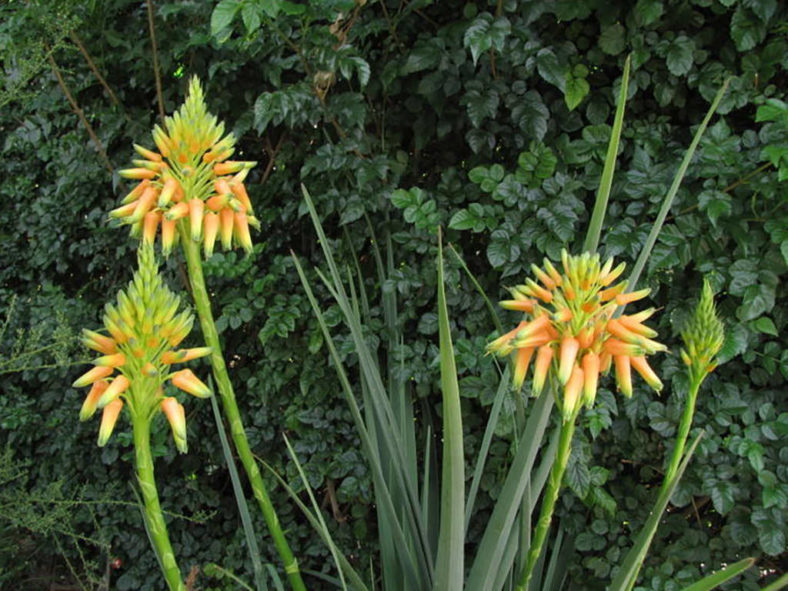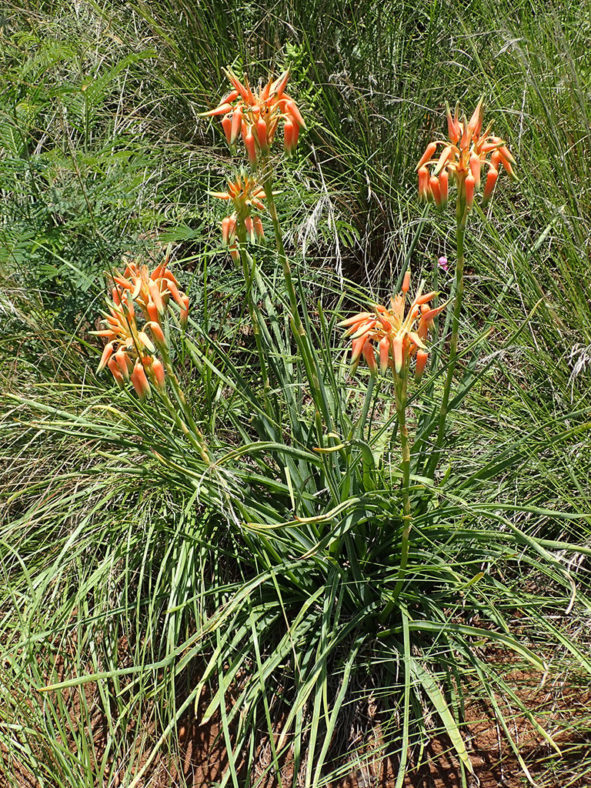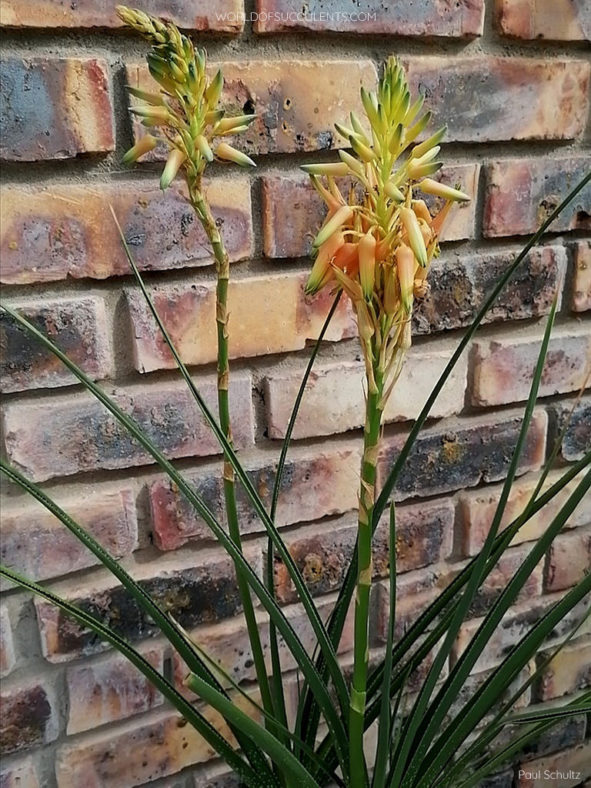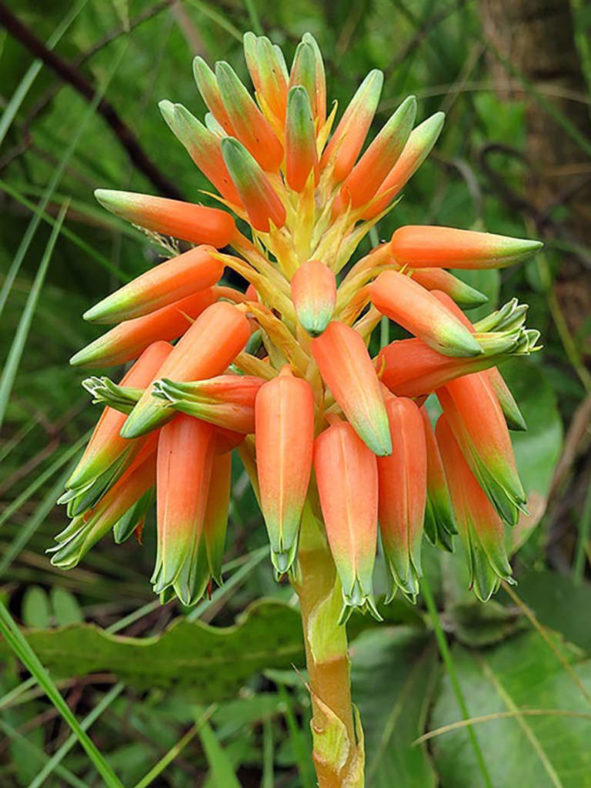Scientific Name
Aloe cooperi Baker
Common Name(s)
Cooper's Aloe
Synonym(s)
Aloe schmidtiana
Scientific Classification
Family: Asphodelaceae
Subfamily: Asphodeloideae
Genus: Aloe
Etymology
The specific epithet "cooperi (koo-PER-ee)" honors Thomas Cooper (1815-1913), an English horticulturalist and plant collector who rediscovered this species in 1860.
Origin
Aloe cooperi occurs mainly in KwaZulu-Natal and Mpumalanga, just entering the eastern Free State, the southeast of Limpopo, and the northern part of the Eastern Cape in South Africa, also widespread in Eswatini (formerly known as Swaziland) and just entering Lesotho and Mozambique. It regularly grows in marshy places but also in well-drained habitats, often among rocks on grassy hillsides.
Description
Aloe cooperi is a stemless or short-stemmed succulent with erect, grass-like, distichous leaves, rarely spirally twisted to rosulate in old specimens. It grows solitary or sometimes with offshoots at the ground level, forming small clusters. The leaves are narrowly deltoid, distinctly keeled, V-shaped in cross-section, measuring up to 32 inches (80 cm) long and 2.4 inches (6 cm) wide. They are green, usually without spots, sometimes with a few scattered spots near the base, and have margins with a narrow, white, cartilaginous edge and firm, white teeth.
The flowers are salmon-pink and green-tipped and appear tightly clustered at the top of erect, unbranched inflorescences that can grow up to 3.3 feet (1 m) tall in summer. They are cylindric-trigonous and can reach up to 1.6 inches (4 cm) in length and 0.5 inches (1.2 inches) in diameter. The plant dies to the ground in extreme cold and regrows when the weather warms.
Aloe cooperi is a member of the group of Aloes with a grass-like appearance, commonly known as Grass Aloes.

How to Grow and Care for Aloe cooperi
Light: When growing A. cooperi indoors, place your plant in a window with plenty of bright indirect sunlight. Rotate the pot once or twice a week so that all sides of the plant receive equal lighting. Outdoors provide light shade, especially during the hottest parts of the day.
Soil: Plant A. cooperi in a well-drained soil mix formulated for succulents or make your own. Drainage is essential because too much moisture around roots can cause root rot.
Temperature: Though not particularly happy in high-heat locations, A. cooperi can withstand temperatures as low as 30 °F (-12.2 °C). USDA Plant Hardiness Zones 8a to 10b, 10 to 40 °F (-12.2 to 4.4 °C).
Watering: This succulent does need regular watering but is very tolerant of drought conditions for short periods. Water deeply, but only when the soil is dry. Cut back on watering during the winter months. Do not let water stand in the rosettes.
Fertilizing: A. cooperi generally does not require fertilizer but may benefit from the extra nutrients. Feed with a fertilizer for succulents in spring and summer only. Be sure to follow the label directions.
Repotting: This plant is not particularly fast-growing and will only rarely need repotting. Repot it in the spring in a container a few inches larger in diameter every few years to keep it from becoming rootbound.
Propagation: Propagating A. cooperi can be done using seeds or offsets from a mature plant. Remove the offsets from late spring to early summer. For best results, sow seeds during the warm months.
Learn more at How to Grow and Care for Aloe.
Toxicity of Aloe cooperi
A. cooperi is not listed as toxic for people and pets.
Links
- Back to genus Aloe
- Succupedia: Browse succulents by Scientific Name, Common Name, Genus, Family, USDA Hardiness Zone, Origin, or cacti by Genus
Photo Gallery
Click on a photo to see a larger version.


